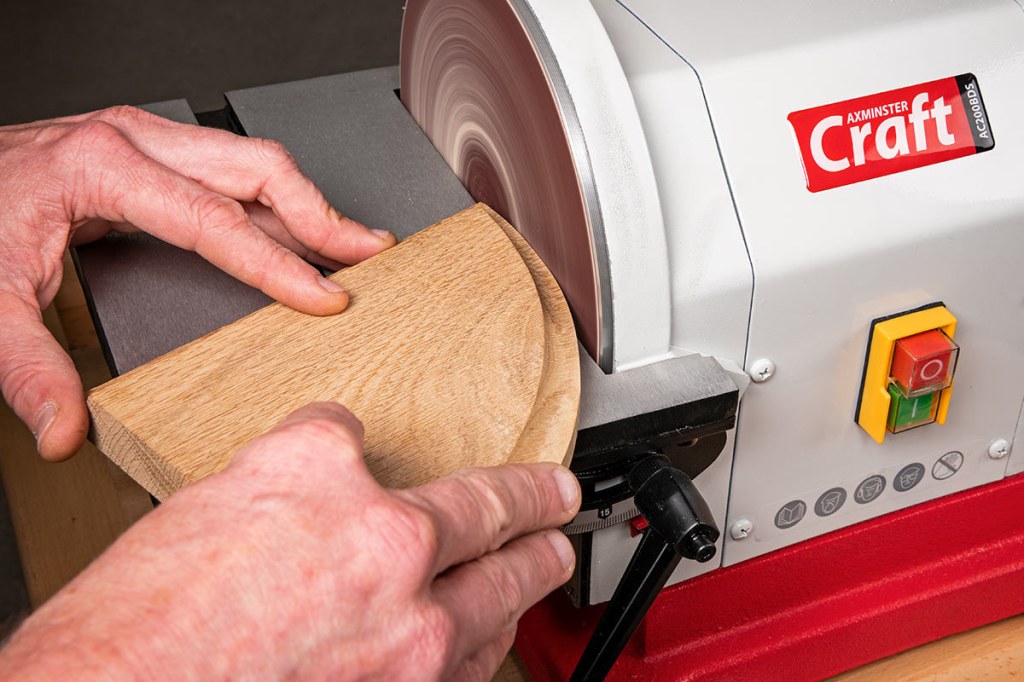Drum Sander vs Belt Sander: A Comprehensive Comparison
Introduction
Dear Music Enthusiast,
Welcome to our in-depth analysis of drum sanders and belt sanders. As a drummer, you understand the importance of having perfectly smooth drum shells and cymbals for optimal sound quality. In this article, we will explore the key differences between drum sanders and belt sanders, their main applications, advantages, disadvantages, and how they can help you achieve the desired results for your drums. Let’s dive in!
Table: Drum Sander vs Belt Sander

Image Source: axminstertools.com
Below is a table providing a complete overview of the features and specifications of drum sanders and belt sanders:
Drum Sander
Belt Sander
Main Function
Smooth drum shells and cymbals
Smooth wood surfaces

Image Source: ytimg.com
Sanding Mechanism
Rotating drum covered with sandpaper
Moving abrasive belt
Size Options
Available in various drum widths
Available in different belt widths
Speed
Variable speed options
Variable speed options
Precision
Highly precise for fine sanding
Less precise, suitable for rough sanding

Image Source: ytimg.com
Application
Drum making and refinishing
Woodworking projects
Advantages
Efficient and consistent sanding
Versatile and aggressive sanding
Disadvantages
Expensive and requires skill
May leave visible sanding marks
What is a Drum Sander?
A drum sander is a specialized machine used for smoothing drum shells and cymbals. It consists of a rotating drum covered with sandpaper, which sands the surface of the drums as they pass through the machine. The drum can be adjusted to different widths to accommodate various drum sizes. Drum sanders are mainly used in drum making and refinishing processes to ensure the drums have a consistent and smooth finish.
Who Should Use a Drum Sander?
Drum sanders are primarily used by professional drum makers, drum refurbishers, and musicians who want to achieve the best possible sound quality from their drums. If you are serious about drumming and want to optimize the performance of your drums, a drum sander is a valuable tool to have in your arsenal.
When to Use a Drum Sander?
A drum sander should be used when you need to remove imperfections, scratches, or uneven surfaces from drum shells and cymbals. It is also useful for achieving a smooth finish before applying a new coat of paint or lacquer. Additionally, drum sanders are commonly used during the drum making process to ensure the drum shells are perfectly smooth and ready for assembly.
Where Can You Find Drum Sanders?
Drum sanders can be found in specialized woodworking stores and online marketplaces. It’s important to choose a reputable brand that offers reliable and durable drum sanders. Some popular drum sander brands include Jet, SuperMax, and Performax.
Why Choose a Drum Sander?
The main advantage of using a drum sander is its efficiency and precision in sanding drum shells and cymbals. Unlike other sanding methods, drum sanders can provide a uniform finish without leaving visible sanding marks. This ensures that the drums produce the best possible sound quality by allowing the drumheads to vibrate freely.
How to Use a Drum Sander?
Using a drum sander requires some skill and knowledge to achieve the desired results. Here are the general steps to follow:
Prepare the drum by removing any hardware and accessories.
Adjust the drum sander’s settings according to the desired width and speed.
Feed the drum into the machine, ensuring a steady and even movement.
Monitor the sanding progress and make any necessary adjustments.
Inspect the sanded drum and repeat the process if needed.
Finish the drum with paint, lacquer, or any desired coating.
Reassemble the drum with the hardware and accessories.
Advantages and Disadvantages of Drum Sanders
Advantages:
✅ Efficient and consistent sanding process
✅ Highly precise for fine sanding
✅ Provides a smooth finish without visible sanding marks
Disadvantages:
❌ Expensive investment
❌ Requires skill and experience to operate
❌ May cause damage if not used correctly
What is a Belt Sander?
A belt sander is a versatile power tool commonly used in woodworking projects. It consists of a continuous loop of abrasive belt that moves over two or more rollers. Belt sanders are available in various belt widths, allowing them to quickly remove material and smooth wood surfaces.
Who Should Use a Belt Sander?
Belt sanders are suitable for both professional woodworkers and DIY enthusiasts who frequently work with wood. If you often find yourself needing to remove large amounts of material or sand rough surfaces, a belt sander can significantly speed up the process and provide a smooth finish.
When to Use a Belt Sander?
A belt sander should be used when you need to quickly remove material, shape wood, or smooth rough surfaces. It is especially effective for tasks such as leveling uneven boards, removing old paint or finishes, and preparing surfaces for staining or painting.
Where Can You Find Belt Sanders?
Belt sanders are widely available in hardware stores, home improvement centers, and online retailers. Popular brands for belt sanders include Makita, DeWalt, and Bosch.
Why Choose a Belt Sander?
The main advantage of using a belt sander is its versatility and aggressive sanding capabilities. The continuous movement of the abrasive belt allows for quick material removal and efficient sanding of large surfaces. Additionally, belt sanders are often more affordable than drum sanders, making them a popular choice for woodworkers on a budget.
How to Use a Belt Sander?
Using a belt sander is relatively straightforward, but it requires caution to avoid accidents and achieve desired results. Here are the general steps to follow:
Choose the appropriate grit size for the abrasive belt based on your project.
Secure the workpiece firmly to prevent movement during sanding.
Hold the belt sander with a firm grip and turn it on.
Move the sander in the direction of the wood grain, applying even pressure.
Avoid tilting the sander to prevent uneven sanding.
Inspect the sanded surface and repeat if necessary.
Remove any dust or debris from the workpiece before finishing.
Advantages and Disadvantages of Belt Sanders
Advantages:
✅ Versatile and aggressive sanding capabilities
✅ Suitable for quick material removal and leveling surfaces
✅ More affordable compared to drum sanders
Disadvantages:
❌ May leave visible sanding marks if not used properly
❌ Less precise for fine sanding compared to drum sanders
❌ Can be difficult to control on delicate or small workpieces
Frequently Asked Questions (FAQ)
1. Can I use a drum sander on other surfaces besides drums?
Yes, you can use a drum sander on other wooden surfaces as long as the width of the drum accommodates the size of the surface. However, keep in mind that drum sanders are primarily designed for drum shells and cymbals.
2. Can I use a belt sander for fine woodworking?
While belt sanders are not typically used for fine woodworking due to their aggressive nature, they can be used for initial material removal and shaping. Finer sanding can be achieved with higher grit abrasive belts and by following up with other sanding methods.
3. Are drum sanders suitable for beginners?
Drum sanders require skill and experience to operate effectively. Beginners may find it challenging to achieve the desired results without prior knowledge of drum sanding techniques. It is recommended to practice on scrap materials before working on valuable drums.
4. Can I rent drum sanders or belt sanders?
Yes, some equipment rental stores offer drum sanders and belt sanders for short-term use. Renting can be a cost-effective solution if you have a one-time project or limited budget. However, for long-term use, purchasing a machine may be a more economical choice.
5. How often should I replace the sandpaper on a drum sander or belt sander?
The frequency of sandpaper replacement depends on the intensity and frequency of usage. As a general guideline, inspect the sandpaper regularly for wear and tear, and replace it when it no longer effectively removes material or results in a smooth finish.
Conclusion
After comparing the features, advantages, and disadvantages of drum sanders and belt sanders, it is clear that both tools have specific applications and benefits. Drum sanders excel in providing precise and smooth finishes for drums, while belt sanders offer versatility and efficiency for general woodworking projects.
Whether you are a drum enthusiast or a woodworking enthusiast, choosing the right tool depends on your specific needs and preferences. Consider the type of projects you undertake, your budget, and the level of expertise required before making a decision.
Remember, proper usage and safety precautions are essential when operating any power tool. Always follow the manufacturer’s instructions and wear appropriate protective gear to ensure a safe and successful sanding experience.
Final Remarks
We hope this comprehensive article on drum sanders vs belt sanders has provided you with valuable insights and guidance in choosing the right tool for your needs. Remember, the key to achieving exceptional results lies in understanding the capabilities and limitations of each tool, and using them appropriately to enhance your craft.
As always, happy sanding and drumming!